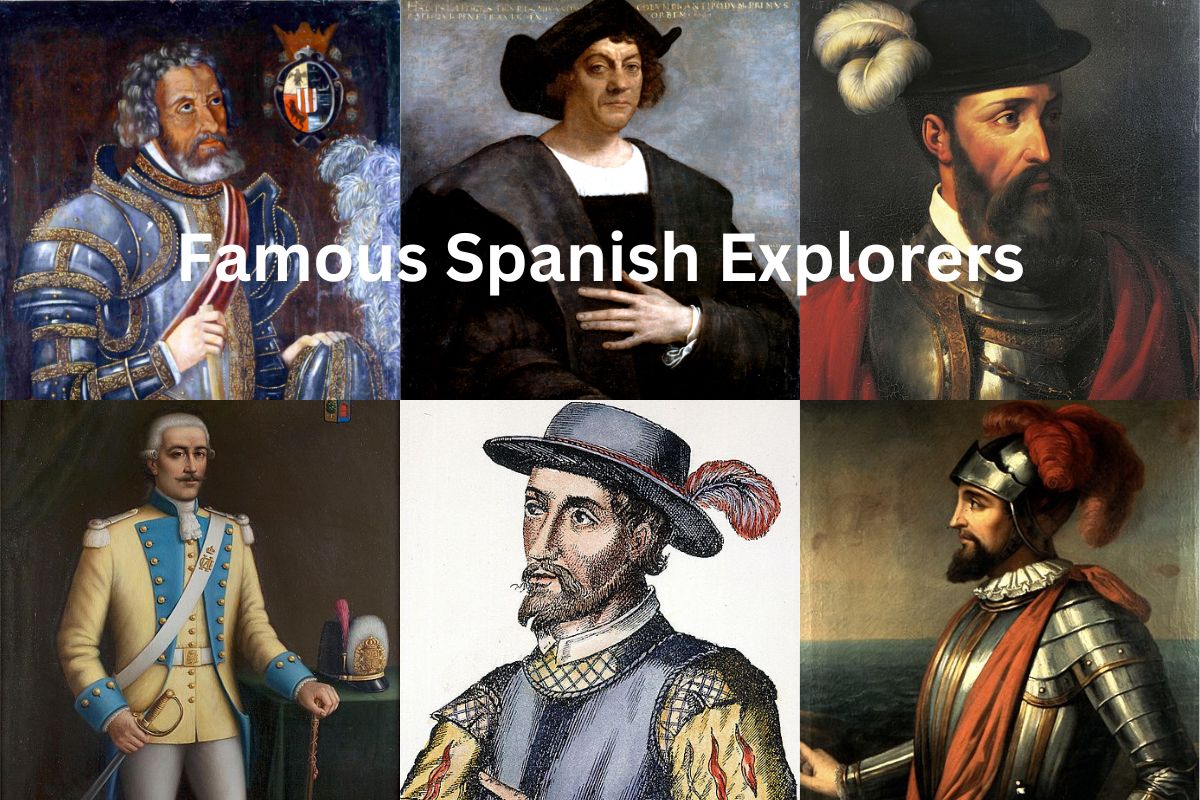Spanish explorers were adventurers and conquerors who traveled the seas on behalf of the Spanish monarch in pursuit of new territory and riches.
They proceeded on a series of journeys that expanded Spain’s territorial claims and strengthened its riches and power beginning in the late 15th century. The quest for riches, the spread of Religion, and the pursuit of glory and honor drove Spanish exploration.
The explorers encountered numerous hurdles, including hostile native populations, sickness, and perilous oceans, yet they persevered and built a massive empire that stretched across continents.
The language, culture, and architecture of the countries and territories they colonized bear witness to the legacy of Spanish exploration.
Famous Spanish Explorers
1. Christopher Columbus
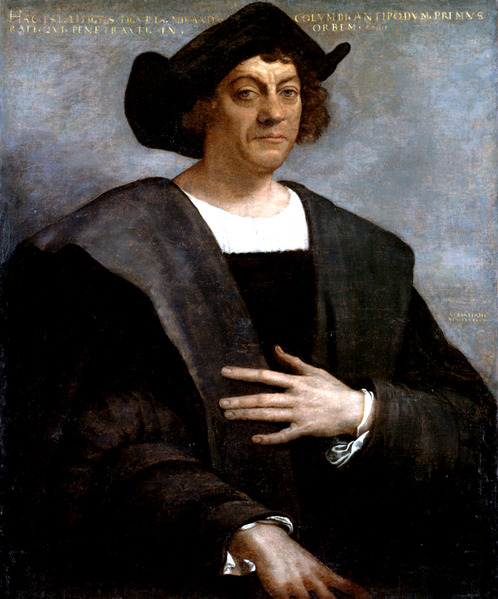
Christopher Columbus was an Italian-born explorer who discovered America while sailing for the Spanish crown. Although not born a Spaniard he is often considered a Spanish explorer as all of his trips were made on behalf of the King of Spain.
Also Read: Historical Facts About Spain
In 1451, he was born in Genoa, Italy, and began his career as a sailor and mapmaker.
Columbus set sail from Spain in 1492, accompanied by three ships, the Nina, Pinta, and Santa Maria, in pursuit of a new passage to the East Indies. Instead, he landed on a Bahamas island he named San Salvador.
He returned to the Americas three more times during the next few years, exploring the Caribbean and sections of Central and South America.
Also Read: Famous French Explorers
Columbus’ voyages had a significant impact on world history, as they marked the start of European exploration and settlement of the New World.
His reputation, however, is contentious due to the disastrous impact of European colonization on native populations and the fact that he was not the first person to find America.
Also Read: Christopher Columbus Facts
Furthermore, Columbus’ handling of the local communities he encountered, notably his use of forced labor and his role in spreading sickness that destroyed the indigenous population, has been condemned.
Notwithstanding of the controversy surrounding Columbus, his voyages and the subsequent colonization of the Americas represented a significant turning point in world history and continue to affect the world today.
2. Hernán Cortés
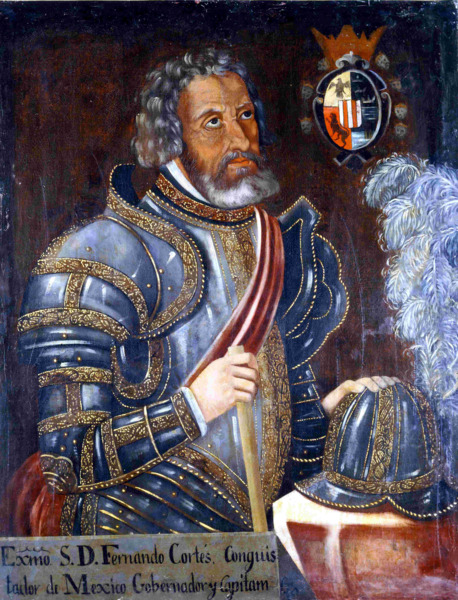
Hernán Cortés was a Spanish conquistador who is best remembered for defeating the Aztec Empire in modern-day Mexico. He was born in 1485 in Spain and arrived in the Americas about 1504.
Also Read: Facts About Hernán Cortés
Cortés conducted an expedition to Mexico in 1519 with the intention of discovering wealth and expanding Spanish control. He entered the Aztec Empire’s dominion and waged a two-year conquest campaign against the Aztecs, eventually conquering their capital city of Tenochtitlan.
The Aztec Empire was brutally attacked by Cortés, who killed thousands of Aztecs. Yet, it prepared the way for Spanish colonization of Mexico as well as the rest of Central and South America.
Also Read: Accomplishments of Hernán Cortés
In the Americas, Cortés is remembered as a symbol of Spanish colonization and conquest. The fact that his conquests were marred by murder, exploitation, and the annihilation of indigenous civilizations complicates his legacy.
He is also acknowledged with influencing early American history as well as the global exchange of ideas, goods, and people.
3. Francisco Pizarro
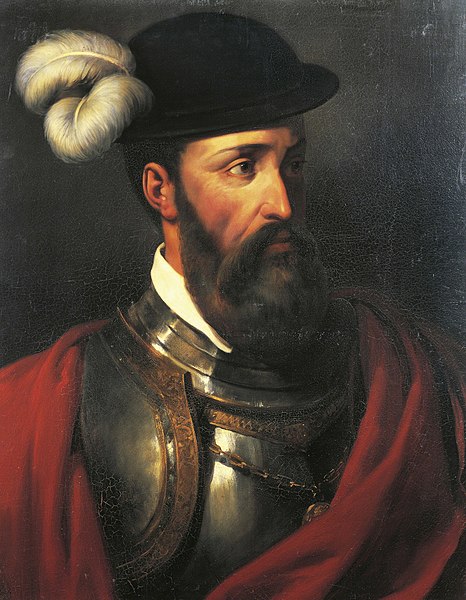
Francisco Pizarro was a Spanish conquistador best remembered for defeating the Inca Empire in modern-day Peru. He was born in 1471 in Spain and arrived in the Americas about 1502.
In 1531, Pizarro conducted an expedition to Peru with the intention of gaining money and increasing Spanish dominion. He entered the Inca Empire’s domain and launched a protracted invasion battle against the Incas, eventually taking Cuzco, the Incas’ capital city.
Also Read: Timeline of Francisco Pizarro
Pizarro’s invasion of the Inca Empire was characterized by violence, exploitation, and the annihilation of Incan civilization. Yet, it laid the groundwork for Spanish colonization of Peru and the rest of South America.
In the Americas, Pizarro is remembered as a symbol of Spanish colonialism and conquest. His conquests resulted in the deaths of thousands of Incas and the destruction of their culture and way of life, damaging his reputation.
4. Juan Ponce de León
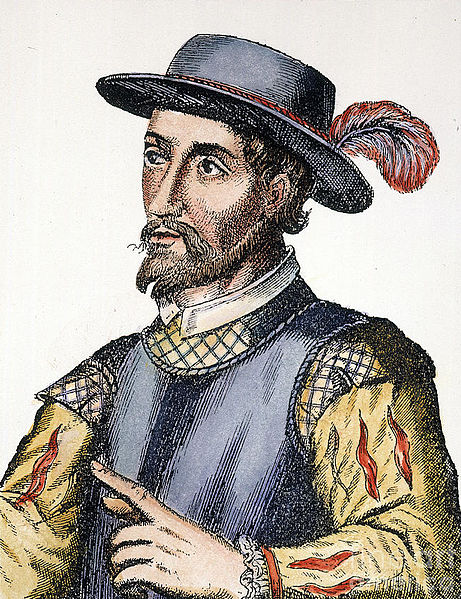
Juan Ponce de León was a Spanish explorer most remembered for discovering the legendary Fountain of Youth in Florida. He was born in 1474 in Spain and traveled to the Americas multiple times.
In 1513, Ponce de León led an expedition to Florida, where he established the first Spanish settlement on the North American peninsula. Because of the rich vegetation he discovered, he named the region Florida, which means “flowery” in Spanish.
Ponce de León is also remembered for his quest for the Fountain of Youth, a fabled fountain claimed to restore youth and vigour to anybody who drank from it. Despite the fact that he did not find the Fountain of Youth, his journey aided in the exploration and colonization of Florida.
He returned to the Americas several times, including an ill-fated trip to Florida in 1521, during which he was wounded by a native arrow and died as a result of his injuries.
Also Read: Accomplishments of Juan Ponce de Leon
Ponce de León is renowned today for his pivotal role in the Spanish discovery and colonization of the Americas. His journeys contributed to the spread of Spanish dominance in the region, paving the way for the colonization of Florida and other portions of North America.
5. Vasco Núñez de Balboa
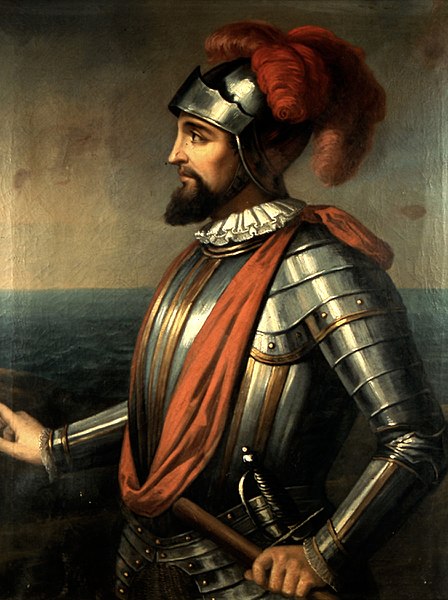
Vasco Nez de Balboa was a Spanish conquistador most known for his role in the discovery of the Pacific Ocean in 1513. He was born in Jerez de los Caballeros, Spain, in 1475, and arrived in the New World in 1500 as part of an expedition led by Rodrigo de Bastidas.
In 1510, Balboa established Santa Mara la Antigua del Darién on the coast of modern-day Panama. He then set out to explore the surrounding territory, which was home to the Kuna and other indigenous people.
Also Read: Spanish Colonization Timeline
In 1513, Balboa led an expedition over the Panama Isthmus to the Pacific coast, becoming the first European to see the ocean. He claimed the entire coastline and the water for the Spanish crown, dubbing it the South Sea.
Balboa’s exploits made him famous among Spanish colonists, but Panama’s governor, Pedro Arias Dávila, eventually accused him of insubordination and treason. He was apprehended, tried, and executed in 1519.
Although his untimely death, Balboa’s discovery of the Pacific Ocean represented a turning point in Spanish exploration of the Americas. It opened up new trade and exploration opportunities, paving the way for future Spanish colonization of the Philippines and other Pacific islands.
6. Juan Sebastián Elcano
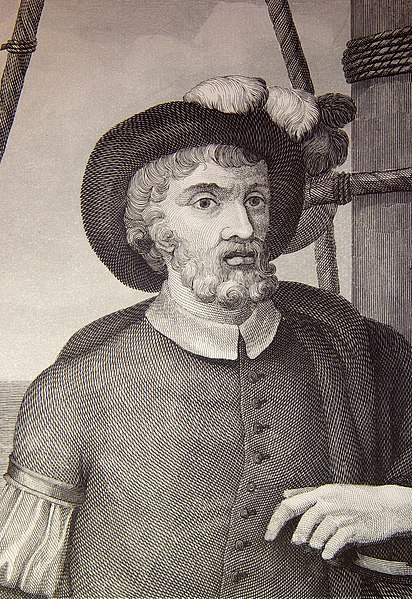
Juan Sebastián Elcano was a Spanish explorer best recognized for completing the world’s first circumnavigation. Elcano was born in 1476 in Getaria, Spain, and worked as a Basque sailor. In 1519, he joined Ferdinand Magellan’s expedition, which had been commissioned by the Spanish crown to find a western path to the Spice Islands.
During the mission, Elcano was the captain of one of the fleet’s five ships. Elcano gained command of the surviving ship, the Victoria, after Magellan died in the Philippines, and led the expedition back to Spain via the Cape of Good Hope. On September 6, 1522, the Victoria returned to Spain, completing the world’s first circumnavigation.
Elcano’s accomplishment was a watershed moment in the history of exploration, helping to establish Spain as a prominent naval power in the 16th century. Yet, he is frequently eclipsed by the more famous figure of Ferdinand Magellan, who launched the trip.
However, Elcano’s daring and leadership were critical in assuring the expedition’s success, and his name is connected with one of history’s greatest accomplishments of discovery.
7. Álvar Núñez Cabeza de Vaca
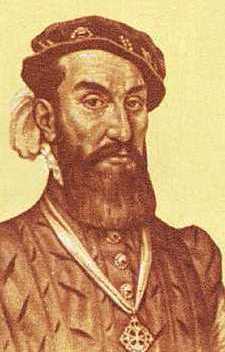
lvar Nez Cabeza de Vaca was a 16th-century Spanish explorer most known for his journey through what is now southern America. He was born in 1490 to a wealthy family in Jerez de la Frontera, Spain. He was designated treasurer of an expedition to Florida in 1527 to build a colony and seek riches.
However, the expedition was beset by a number of failures, including shipwrecks, attacks by indigenous groups, and disease. Cabeza de Vaca, together with three other Spaniards: Andrés Dorantes de Carranza, Alonso del Castillo Maldonado, and Estevanico, a Moorish slave, were among the few survivors.
After several years of travel across what is now Texas, New Mexico, and northern Mexico, the group landed in 1536 at the Spanish colony of Culiacán.
They had learned to survive in the midst of indigenous tribes by copying their rituals and relying on their knowledge of local plants and animals. Cabeza de Vaca was famed for his healing abilities and performed a range of medical treatments, earning him the nickname “El Médico.”
When Cabeza de Vaca returned to Spain in 1537, he published “Naufragios” (“Shipwrecks”), an account of his voyages that is today considered a masterpiece of early Spanish-American literature. In the book, he described his relationships with indigenous tribes, his experiences as a slave, and his views of the natural surroundings.
Cabeza de Vaca later became governor of Argentina’s Río de la Plata region, however his tenure was hampered by disagreements with other Spanish officials. He returned to Spain in 1559 and died in Seville in 1560. His legacy as a forefather explorer and chronicler of the early Spanish presence in the Americas lives on to this day.
8. Gaspar de Portolá
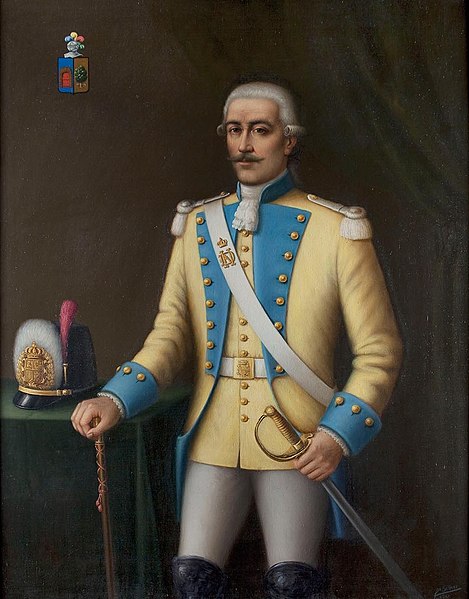
Gaspar de Portolá was a Spanish soldier and explorer who was influential in the colonization of California in the 18th century. He was born in Os de Balaguer, Spain, in 1716, and arrived in Mexico in 1746 as a captain in the Spanish army.
In 1767, Portolá was named governor of the Californias, a Spanish province that included modern-day California, Baja California, and portions of Arizona, Nevada, and Utah. He was tasked with establishing a Spanish presence in California, which at the time was totally unknown to Europeans.
In 1769, Portolá led an expedition of 60 troops and missionaries north from San Diego to Monterey, California, in search of a suitable location for a Spanish town.
The voyage contacted several indigenous people and suffered a variety of difficulties along the way, including rugged terrain, harsh weather, and food shortages.
After several months of journey, Portolá and his forces arrived in Monterey, where they built a Spanish presidio and mission. Portolá went on to lead several more journeys in California, including one to San Francisco Bay.
Portolá’s voyages helped establish a Spanish footing in California, paving the way for further colonization and settlement. He is remembered as a trailblazing adventurer who played a vital part in the history of California and the American West. Many places in California are named after him, including Portola and the Portola Redwoods State Park.
9. Pedro Menéndez de Avilés
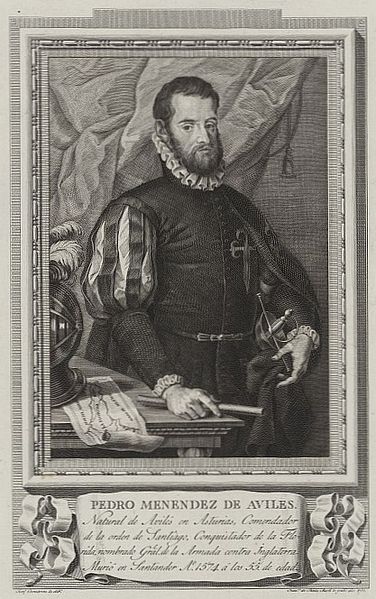
Pedro Menéndez de Avilés was a Spanish explorer and soldier best known for establishing Spanish settlements throughout Florida and the Southeastern United States. Menéndez was born in 1519 in Avilés, Spain, and was assigned to lead an expedition to Florida by the Spanish crown in 1565.
Menéndez’s purpose was to create a permanent settlement in Florida and protect the region from the French, who had already established a settlement there.
Menéndez landed in Florida and created St. Augustine, the United States’ oldest continuously inhabited city. He also built a number of forts and missions around the region, including Fort Caroline, which he took from the French.
Menéndez’s legacy is contentious, as he is renowned for his violent treatment of the indigenous peoples he encountered. He is responsible for the execution of hundreds of French soldiers as well as the massacre of hundreds of indigenous inhabitants along the Matanzas River.
Menéndez’s participation in establishing Spanish settlements in Florida, despite this, helped to consolidate Spain’s claim to the region and contributed to the expansion of the Spanish Empire in the Americas.
10. Francisco Vázquez de Coronado
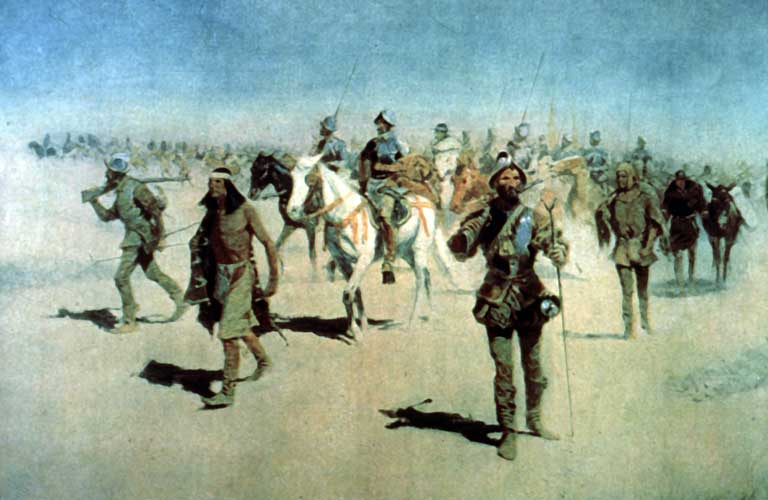
Francisco Vázquez de Coronado was a conquistador who led an expedition into what is now the southwestern United States in the 16th century. He was born into a wealthy family in Salamanca, Spain, in 1510. He arrived in Mexico in 1535 as part of an expedition led by Antonio de Mendoza, the first viceroy of New Spain.
Coronado was appointed governor of Nueva Galicia, a region in western Mexico that included modern-day Jalisco, Nayarit, and Sinaloa. During his governorship, he was tasked with leading an expedition to find the fabled Seven Cities of Gold, supposed to be located to the north of New Spain.
Coronado commanded a massive expedition of over 1,000 Spanish soldiers and indigenous allies such as the Hopi, Zuni, and Pueblo peoples. The journey took them through Arizona, New Mexico, Texas, Oklahoma, and Kansas, passing through various indigenous tribes and settlements.
Coronado and his men never found the Seven Cities of Gold, which proved out to be a myth. Yet, the journey resulted in the discovery of the Grand Canyon and other significant features. After three years of wandering, Coronado returned to Mexico City in 1542, where he was chastised for failing to find the fabled riches.
Coronado remained in Mexico until his death in 1554. While his trip did not achieve its stated purpose, it is regarded as a watershed moment in the history of Spanish exploration of the Americas.
